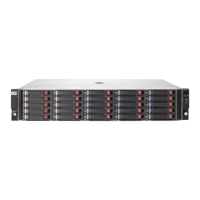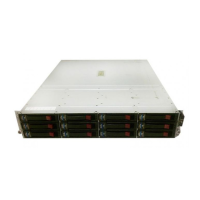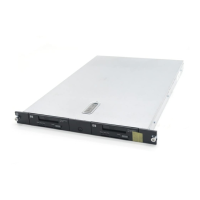• HBA
• Application
• Port allocation
Zoning by operating system
Zoning by operating system is the minimal required zoning method. This method allows multiple HBAs
with the same operating system to be grouped with the accessed storage ports. Zoning by operating
system prevents the interaction of HBAs with incompatible operating systems.
This method limits the number of zones in a fabric. A large zone can be divided into multiple zones
within the operating system type. Zoning by operating system type limits disruptions and the number
of fabric change notifications.
Certain situations require zoning by HBA, for example, configuring server access to multiple storage
types. For additional zoning requirements, see:
• Common server access, page 232
• “Zoning limits and enforcement” on page 90 (H-series)
• Zoning limits and enforcement, page 128 (B-series)
• Zoning limits and enforcement, page 150 (C-series)
• Zoning limits and enforcement, page 165 (M-series)
Zoning by HBA
For zoning by HBA, each zone has only one HBA (initiator); each of the target devices is added to
the zone. Typically, a zone is created for the HBA and the disk storage ports are added. If the HBA
also accesses tape devices, HP recommends that a second zone be created for the HBA and associated
tape devices. For zoning requirements with different HBA models on the same server, see
“Common server, separate HBAs” on page 232.
This zoning philosophy is the preferred method for both standalone and clustered systems; zoning by
single HBA requires the creation of numerous zones; each containing only a few members. Zone
changes affect a small number of devices, minimizing the effect of an incorrect zone change.
Zoning by application
Zoning by application configures multiple, sometimes incompatible, operating systems into the same
zones. This method allows the potential for disruptions among servers, such as a web server disrupting
a data warehouse server. A zone with a large number of members is susceptible to more administrative
errors, such as distribution of RSCNs to a larger group than necessary.
Zoning by port allocation
Avoid zoning by port allocation unless you have strictly enforced processes for port and device
allocation in the fabric.
There is no consequence for the change of WWN when a storage port, server HBA, or tape drive is
replaced. If the new device connects to the original port, it continues to have the same access rights.
You can preassociate switch ports with storage ports, and therefore control the server-to-storage ratio.
This technique prevents overloading of a storage port by allowing you to limit the number of servers
that are allowed access.
Best practices422

